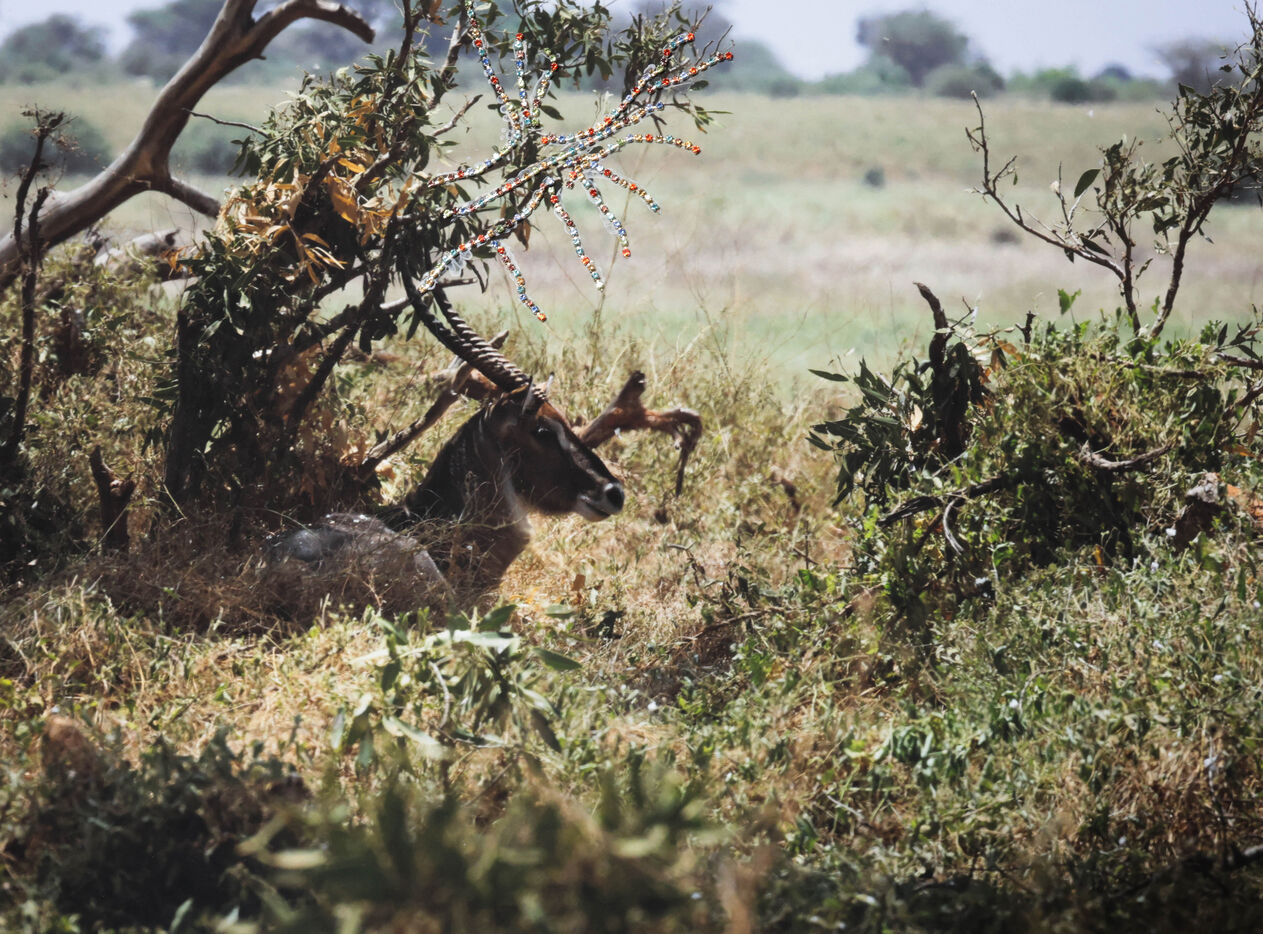Mti na savanna
Expansion de l'habitat humain et des cultures agricoles, recherche de pâturages, sécheresse, sont des facteurs qui mettent en danger les couloirs de migration et l'écosystème vital pour la survie des animaux sauvages dont la diminution des arbres. Cette recherche artistique met en lumière par l'usage de plusieurs techniques la beauté de cette nature mais aussi sa fragilité. Les pâturages, les arbres ainsi que les animaux qui évoluent dans le parc national de Tsavo Est et du Wildlife Sanctuary au Kenya participent au maintien de cet écosystème. Chacun a un rôle bien défini. Mon intention ici est de questionner positivement chacun de vous sur les problématiques du devenir de cette faune et flore, en utilisant les couleurs et codes traditionnels issus de la culture Kenyane. Chaque image a sa propre signification et raconte en quoi les animaux sauvages présents dans ces parcs sont intimement liés à la végétation et aux arbres. Chacun rempli un rôle au maintien de l?écosystème Kenyan. Sans arbre, sans végétation, sans pâturage, les animaux disparaîtront.
Le recensement de 2021, réalisé par les autorités Kenyane, est encourageant pour certaines espèces dont l?augmentation de la population des éléphants. Mais Tsavo et Amboseli ont connu une sécheresse en 2022, jamais vu depuis 40 ans, entrainant la mort d?animaux et la disparition d?arbres. Le conflit entre la population et les animaux sauvages s?accentue car leur habitat s?appauvri. Par ailleurs, le covid a diminué drastiquement le tourisme des safaris photos, qui est important économiquement pour le pays, pour maintenir les espaces protégés.
Le Kenya doit faire face à de nouveaux défis pour maintenir un équilibre entre la population, l?écosystème des espaces naturels et les dérèglements climatiques toujours plus meurtriers dont le cyclone Hidaya qui a fait 238 victimes en mai 2024 et qui voit apparaître les premiers cas de choléra dans le comté de Tana River. La communauté internationale doit se saisir de ces problématiques. Mais pas que, il en revient à chacun de nous de faire des efforts et d?agir.
Mti na savanna
The expansion of human settlements and agricultural crops, the search for grazing land and drought are all factors that endanger migration corridors and the ecosystem vital to the survival of wild animals, including the shrinking of trees. Using a range of techniques, this artistic project highlights the beauty of nature, but also its fragility. The pastures, trees and animals in Kenya's Tsavo East National Park and Wildlife Sanctuary help to maintain this ecosystem. Each has a clearly defined role. My intention here is to positively question each and every one of you on the issues surrounding the future of this flora and fauna, using traditional colours and codes from Kenyan culture.
Each image has its own meaning and tells how the wild animals present in these parks are intimately linked to the vegetation and trees. Each has a role to play in maintaining the Kenyan ecosystem. Without trees, without vegetation, without grazing, the animals will disappear.
The 2021 census, carried out by the Kenyan authorities, is encouraging for certain species, including an increase in the elephant population. But Tsavo and Amboseli experienced a drought in 2022, the worst for 40 years, leading to the death of animals and the disappearance of trees. The conflict between the population and the wild animals is increasing as their habitat becomes poorer. In addition, covid has drastically reduced photo safari tourism, which is economically important for the country, in order to maintain the protected areas.
Kenya faces new challenges in maintaining a balance between the population, the ecosystem of natural areas and increasingly deadly climatic disturbances, including cyclone Hidaya, which claimed 238 victims in May 2024 and saw the first cases of cholera appear in Tana River county. The international community needs to get to grips with these issues. It's up to each and every one of us to make an effort and take action.



















